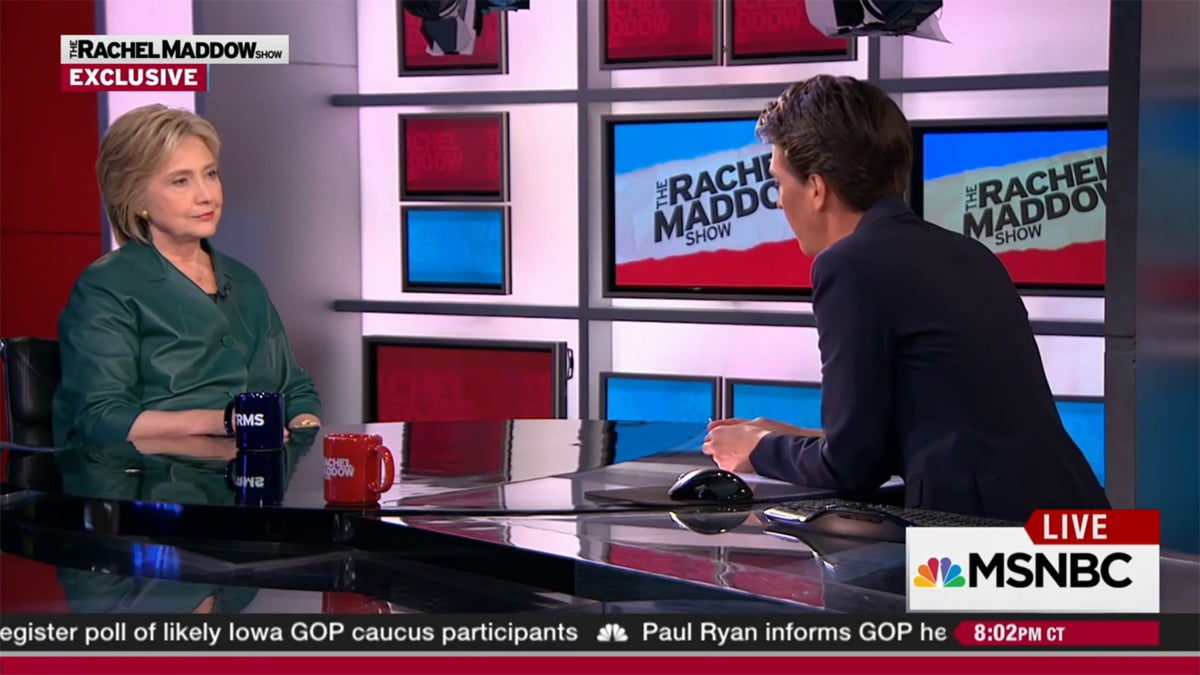The unsexy decimation of the Democrats

Hillary Clinton spoke about rebuilding the Democratic Party at the local level on the Friday broadcast of The Rachel Maddow Show.
Democrats have been spiking the ball in the end zone lately — celebrating Hillary Clinton’s awesome autumn, chuckling at the House Republican chaos, marveling at the preposterous rise of the patently unqualified Ben Carson, reveling in the demographic stats that favor a third straight presidential win.
But there’s a dark side for the Democrats, and it starts with this stunning number: 900.
That’s roughly the number of state legislative seats that Democrats have lost nationwide since Barack Obama was sworn in.
You probably don’t know that stat, because national political journalists rarely highlight state and local races. Tracking the House and Senate is sexy. Tracking the parties’ fortunes in Ohio or Michigan or Nevada … very unsexy. Which is a shame, because what happens at the grassroots is profoundly important. The inescapable, underreported truth is that, during the Obama era, the Democratic party has become profoundly weak at ground level – and that could seriously impede its ability to advance a progressive agenda during a new Clinton era.
Here’s what it means for a party to lose 900 legislative seats in just six years: Right now, Republicans have full control of state government (legislature and governor’s office) in 25 states; Democrats control only seven. Republicans have full control of 30 state legislatures; Democrats, only 11. (When Obama became president, Democrats controlled 27; Republicans, only 14.) All told, Republicans control 68 of the 98 partisan legislative chambers, surpassing the previous GOP record set in 1920. (Nebraska’s single chamber is officially nonpartisan, but in practice Republicans control that, too.) Republicans also hold 31 governorships, nine more than when Obama took office.
And, for the Democrats, here’s what it means to be so weak from the bottom up: The grassroots GOP sets the policy agenda, on everything from abortion to voter ID; the grassroots GOP puts a plethora of future candidates into the pipeline and builds a stronger bench; the grassroots GOP legislators control the most important perk of all, the right to draw the congressional district boundaries in ways that maximize their own voters and disperse the Democrats’ voters. Which is precisely what happened after the GOP scored huge grassroots gains in the 2010 tea-party wave. Which is one big reason why the Republican will likely retain their House majority even if Hillary wins in ’16.
Hillary acknowledges all this. During an interview with Rachel Maddow last Friday night, she said:
“You see the problems when we don’t have a pipeline, from county commissions and school boards and state legislatures all the way up to governors And it has really hurt us … we have been just decimated …. We need to have a real focus on recruitment and raising money for it, and having some united message that people will actually listen to, to help build (the party) from the local level up again.”
You have to wonder why Hillary needs to state the obvious; after all, the importance of building a strong party “from the local level up” is not exactly rocket science. Yet Democrats have been ignoring this priority for years – to their disastrous detriment. Politics abhors a vacuum, and Republicans have happily filled it.
Republicans understand that you build institutional strength by seeding the grassroots. They’ve long outspent Democrats on state legislative races by roughly 2-1. Republicans, whatever their faults, are better at seeing the big picture, at plotting their moves far into the future. I remember talking with Tom Cole, the Republican National Committee’s chief of staff, during the summer of 2000, when everyone was focused on the Bush-Gore presidential race. But Cole was obsessed with the GOP’s state legislative project. He told me, “Next to the presidential race, this is more important to us than any other elections in the country” — because lawmakers in 44 states have the power to map House district boundaries.
The GOP’s priorities haven’t changed. In 2004, it started thinking about the 2010 midterm races — and the subsequent prospects for GOP boundary-drawing in 2011. And now it’s happening again. The GOP’s campaign arm, the unsexily-named Republican State Legislative Committee, is reportedly budgeting $45 million for those races in ’16 for its ongoing Redistricting Majority Project; the Democrats’ counterpart is budgeting only $20 million. Brad Woodhouse, a former national Democratic party spokesman, tells the press, “There’s a growing realization we’ve got to get more serious at the state level,” but what’s amazing is that it has taken so long for this realization to kick in.
Why have the Democrats ceded this crucial turf to the opposition? Lots of reasons. The party’s core constituencies — especially minorities, single women, young people – tend to skip midterm elections. The party is good at top-down messaging, whereas the Republicans are more bottom up. Hillary offered another reason, during her interview with Maddow: “Democrats are really personality-driven. There’s the old line that Democrats fall in love and Republicans fall in line. There’s truth to that.” She seemed to be suggesting — although she’d surely deny it — that the party responded to Obama’s “personality-driven” brand, but neglected the nuts and bolts of party building.
Hillary said that rebuilding the party from the ground up “is not just part of what I want to do, it’s what I must do.” True that. Because if she becomes president, there’s no way she can move a progressive agenda with a party that’s decimated in the House and hollowed out in the hinterlands.
—
Follow me on Twitter, @dickpolman1, and on Facebook.
WHYY is your source for fact-based, in-depth journalism and information. As a nonprofit organization, we rely on financial support from readers like you. Please give today.

